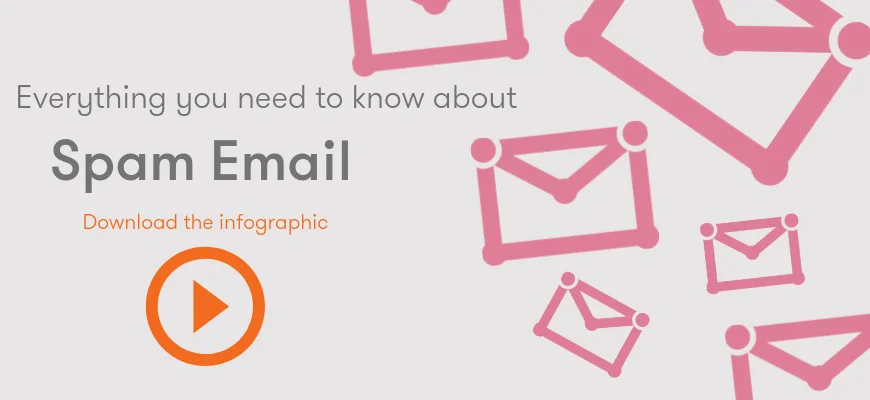In all likelihood, a few times a week, you receive emails from people you don’t know. And not just emails from Karen at Advertising Direct trying to get you to spend money, but from strange email accounts with slightly unusual messages. Sometimes it is just one, sometimes there are hundreds of messages like this, landing straight in your inbox.
These types of emails are known as spam email or junk mail. They are unsolicited messages sent via email, and they have been growing in popularity since the early 1990s.
Download our infographic to find out why hackers are fond of spam emails
Where do spam emails come from?
Recipients of spam have often had their email addresses obtained by spambots, which are automated programs that crawl the internet looking for email addresses. Spammers use spambots to create email distribution lists made up of millions of email addresses. Spambots can even sneak through contact forms should you not have the proper protection in place. When they hit “send” on that spam email, they’ll anticipate that only a small number of people will respond or interact with the message.
Why send spam emails?
Sadly, the intent behind spam emails is usually malicious. Spam emails will almost always contain a website link somewhere in the body of the email. The email might even look and sound very legitimate; an offer for a discount on a product or a link to a new piece of tech review, something inconspicuous to lull the reader into a false sense of security.
What will happen if I click the link?
The dangers of clicking on an unknown website link sent through spam email can have serious consequences. Cyber criminals use spam emails to access personal or company data such as usernames, passwords and credit card details. This is known as a phishing attack. More advanced phishing attacks even mimic login pages for Microsoft software. Microsoft has wised up to this and offers multifactor authentication to better secure Office 365 accounts.
They can also insert a virus to destroy computer systems, or code which can lay hidden and send sensitive data back to the attackers for criminal usage.
They can even lock your system and demand payment to unlock it – do you remember seeing something in the news called Wannacry? This is known as a ransomware attack.
Are spam emails always from strangers?
IT is changing at an incredible pace and cyber criminals are constantly looking for new ways to send attacks through email to unsuspecting victims. Some of the latest tactics are to disguise emails by making them appear to be sent from somebody you know. Perhaps a senior manager at work, with the subject marked as URGENT: MUST READ, or from a personal friend whom you have known for a long time and wouldn’t hesitate to open what they sent you.
What do I do if I receive a spam email?
It is really important that spam emails are dealt with, and not just because they are annoying when they clog up your inbox. They are the favoured tools of cyber criminals because they rely on user error, which is usually the weakest point of entry in a network. We all know how easy it is to slip and click a link when you are tired, especially when phishing attacks are on the rise and looking more legit all the time.
There are snazzy technical things you can try and bits of software available to combat spam, like Office 365 ATP for example. But, for now, we have created a handy little infographic for you to download with five basic steps you can take to protect yourself. It also outlines all the different forms of phishing attack to look out for.
Keep this little graphic on your desktop and the next time you receive something questionable, give it a quick read.




